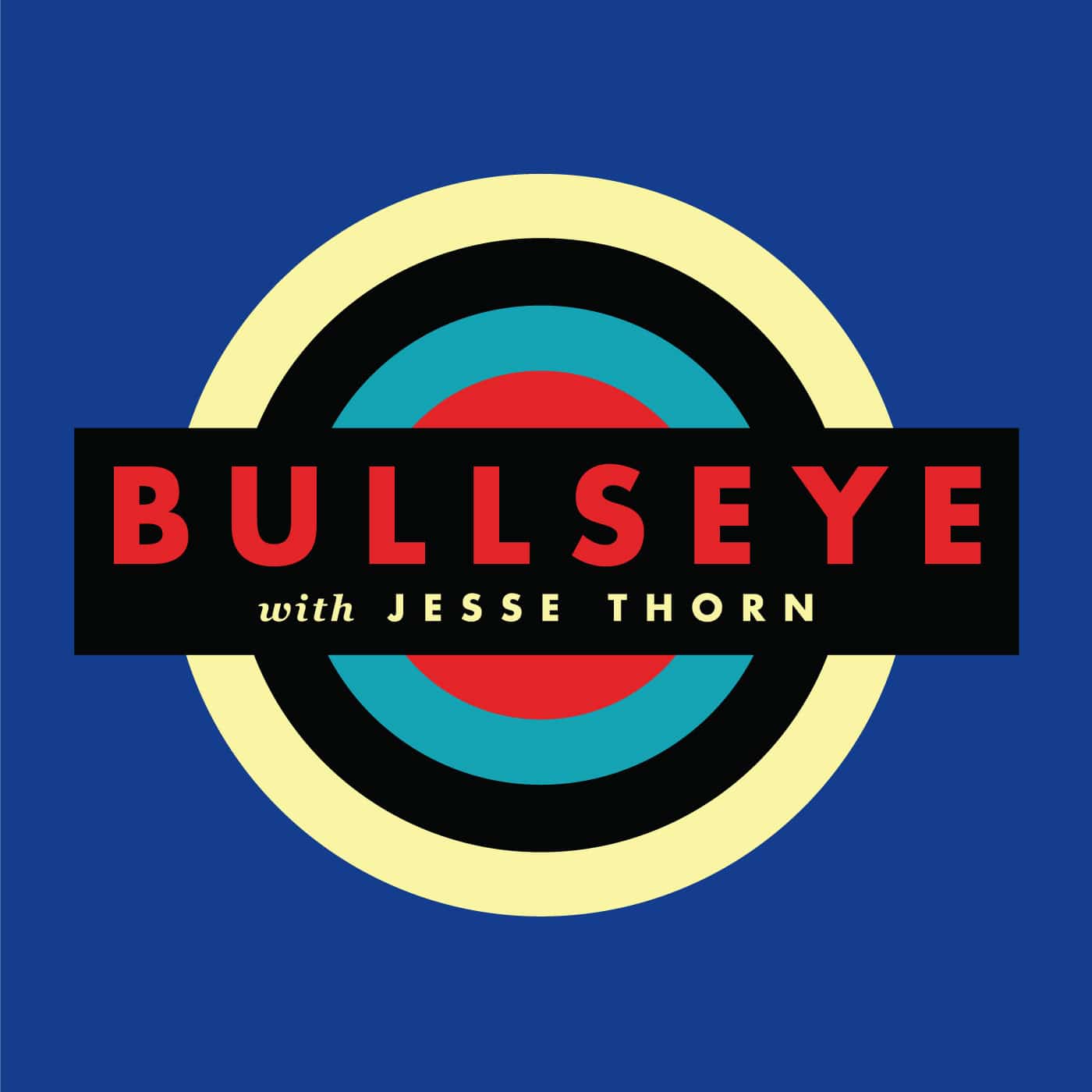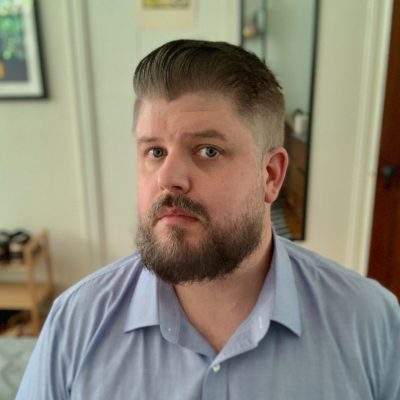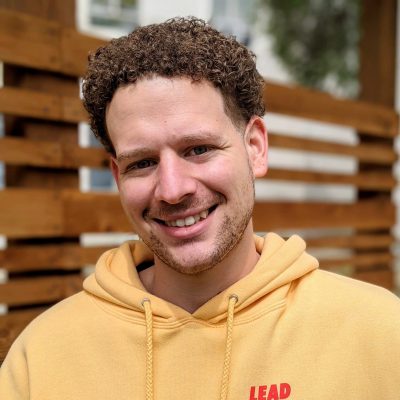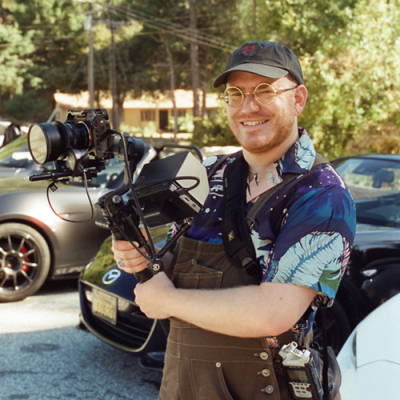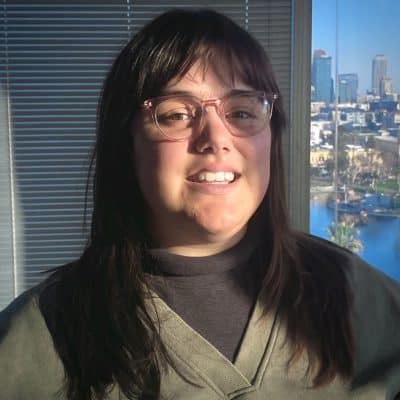Transcript

promo
Music: Moving string music. Speaker 1: In Cherokee Nation, a feud has been simmering for more than 180 years. Speaker 2: I always joked that Bridges and [laughs] the Rosses were like the Montagues and the Capulets. We’ve been fighting for so long that people don’t really know why, but in Cherokee we know why. Speaker 1: That’s next week on Code Switch, from NPR.

jesse thorn
I’m Jesse Thorn. It’s Bullseye.

music
“Huddle Formation” from the album Thunder, Lightning, Strike by the Go! Team.

jesse
Time, now, for The Song that Changed My Life: a segment where we bring on people who make great music and talk with them about the song that defined who they are. This time, it’s Cut Chemist. Born Lucas McFadden and raised right here in Los Angeles, Cut Chemist is a DJ and producer. Together with Chali 2na, Akil, Soup, and more, he cofounded the Jurassic 5—the iconic underground rap group.

music
“Quality Control” by the Jurassic 5. Hey yo, my quality control captivates your party patrol Your mind, body, and soul For whom the bell tolls Let the rhythm explode Big, bad, and bold B-boys of old Many styles we hold, Let the story be told [Music fades out as Jesse speaks.]

jesse
Cut Chemist also made a name for himself as a solo artist. And when we first had him on the show, he’d just released Die Cut.

music
“Die Cut (Theme)” from the album Die Cut by Cut Chemist. Too much pleasure Too much pleasure Kill me [Music fades out as Jesse speaks.]

jesse
Cut Chemist got into hip-hop at a pretty young age. Too young, actually, to get past the doorman at most night clubs. Then he heard about place called The Goodlife Café, in South LA: an all ages health food store with open mics that, in the years since, have become absolutely legendary. The Goodlife scene was known for an uncompromising attitude: bring innovations or else. Legendary LA acts like Snoop Dog and The Black Eyed Peas and Ice Cube were known to stop by. And the venue fostered its own innovative artists, like Abstract Rude and Medusa and the Freestyle Fellowship. The Fellowship was a boundary defying underground crew, fronted by MCs Myka 9 and Aceyalone. At a time when West Coast hip-hop was defined in the popular consciousness by Death Row Records acts, like Snoop and Dre, Freestyle Fellowship bucked the norms. They fused jazz and soul samples into their beats, working in lyrics about Black consciousness and psychedelia, and they also—like their name suggests—just improvised. Their goal was always to create something entirely new. [Music fades in.] Cut Chemist was a fan after one song.

music
“7th Seal” by Freestyle Fellowship. Running butt-naked hysterical in the flames Miracles never claim Captive, devious, dubious, doobies, doomed Damned in hell Forever jump back you crack rock heifer Suffer heavy consequences In a harsher marsh environment blend Your wrinkled up, racked up [Music fades out as Jesse speaks.]]

jesse
But it was something from their second record—1993’s Innercity Griots—that changed Cut Chemist’s life. The song was called “Park Bench People” and it was so far afield from anything he’d heard before. It changed his idea of what hip-hop could be and, eventually by extension, his whole understanding of music.

cut chemist
First time I heard “Park Bench People” by Freestyle Fellowship—well, I was in the living room of my mom’s house, on a recliner. Which is where I listened to all music. I had a boom box on the side of it. The recliner was a rocker. And so, I would—I would be rocking, like literally and figuratively. And somebody had sneaked out a demo tape. I got it from a certain person named [mumbles obfuscated syllables, like an adult in a Peanuts cartoon]. We knew they had got signed by 4th and Broadway, which was Eric B. & Rakim’s label. We were very excited that the major music industry took an interest to our heroes.

jesse
Freestyle Fellowship had always been known for their innovative and unusual rap styles, but on this song it was—it was something more than that.

cut chemist
What made Freestyle Fellowship my heroes was the fact that they weren’t afraid to explore new territory, in music. [Music fades in.] And art. This was a song that was trying to do something outside of their comfort zone.

music
“Park Bench People” from the album Innercity Griots. [Volume decreases as Cut Chemist continues.]

cut chemist
You know, one of the most surprising things, right from jump, about “Park Bench People” was that it was completely void of samples. And it was all live instrumentation. Well, I believe that’s a saxophone that we’re hearing right now. And then the vibes.

music
“Park Bench People” from the album Innercity Griots. [Volume decreases as Cut Chemist continues.]

cut chemist
And here’s Myka 9, on the vocal. And he’s singing.

music
“Park Bench People” from the album Innercity Griots. I see an old man Sitting on a park bench Looking in the sky when He can see the mouth-stench [Volume decreases as Cut Chemist continues.]

cut chemist
And it reminded me of Gill Scott-Heron. And I loved Gill Scott-Heron.

music
“Park Bench People” from the album Innercity Griots. People of the park Sleeping in the street Living from their hearts Sleeping in the street Living’s kinda hard Sleeping in the street [Volume decreases as Cut Chemist continues.]

cut chemist
And, you know, you can hear the naivety in it. It’s not like he’s a complete, seasoned singer. But he’s good enough and I like the fact that there’s a little unseasonedness to it. I mean, that’s what made it approachable to me was the fact that here’s somebody doing something that they normally don’t do, but they’re doing it anyway. Because it’s in their heart.

music
“Park Bench People” from the album Innercity Griots. Looking inside, trying to see something That you didn’t see last night Wanting to get something to eat and [Volume decreases as Cut Chemist continues.]

cut chemist
So, “Park Bench People” is inspired by “Red Clay” by Freddie Hubbard.

music
“Park Bench People” from the album Innercity Griots. [Volume decreases as Cut Chemist continues.]

cut chemist
But it doesn’t sample it. It just interpolates it, musically, with live instruments.

music
“Park Bench People” from the album Innercity Griots. [Volume decreases as Cut Chemist continues.]

cut chemist
And you know, he is flipping it. Like, he didn’t abandon the Myka 9 style. Like, [singing], “People on the other [mumbles through the rest of line].” You know, he’s double-timing it and flipping it, but—you know, like, using, like, a little bit of scat in there and you can hear maybe a little bit of Leon Thomas. You know, a little bit of Andy Bay. I don’t know what Myka was listing to or what JMD was feeding him, like on the music tip at the time, to inspire this song, but—you know, I know he was a searcher and a digger through music culture. I mean, you know, you listen to somebody like Myke and know that they have a large computer file of music in their brain.

music
“Park Bench People” from the album Innercity Griots. You see the children play You hear the people barely look at you Laughing while they run away Sleeping in the street Living from the heart Sleeping in the street People fall apart [Volume decreases as Cut Chemist continues.]

cut chemist
Yeah, I feel like—you know, I can feel the dew and, you know, the moisture of sleeping in the park at night and—yeah, he’s very descriptive. It almost seemed kind of autobiographical for him, because it painted a picture of Leimert Park—Leimert Park is a place nestled within South Los Angeles, and—you know—I used to go there and buy records all the time and see people playing chess. And it was very, like, elderly spirit of jazz. You know, you could go there and just experience old LA in a certain way that doesn’t exist anywhere else and in the city, you could see real jazz. And—I don’t know. You just felt it in the air. There was something special about it. It was very pleasant.

music
“Park Bench People” from the album Innercity Griots. In the sunlight You sit there and you prepare to make to move And so, you go through each and every can Lookin’ inside, tryin’ to see something that you didn’t See last night Wantin’ to get somethin’ to eat And you go down the street [Volume decreases as Cut Chemist continues.]

cut chemist
I was never really a jazz fan, per se, before I heard Freestyle Fellowship. And I had been listening to these guys, anyway, because their records were chock full of dope samples. To go back and listen to the music with a different filter, because of music like this that I was a fan of—yeah, this song changed my life.

music
“Park Bench People” from the album Innercity Griots. [Volume decreases as Jesse speaks.]

jesse
Cut Chemist, with the song that changed his life: “Park Bench People” by Freestyle Fellowship. [Music fades out.] Let’s take a listen to one more song off of Cut Chemist’s album, Die Cut. This one is called “Rhythm Method”, featuring vocals by the one and only, Myka 9.

music
“Rhythm Method” from the album Die Cut by Cut Chemist. In my mind’s eye I witness a repro-bonsai In the kaleidoscope of thoughts on one side Give it to us in oblivion, dreams high A sweeter intellect dies But you were on the crust of finding the best Of mounted madness, flowered march And intrepidly intricate delicates in decay Networks as scanners in human grammar And manner When did it happen? When I was rappin’ The energy zappin’ and trappin’ Your brain went insane, mundane, Untamed, unclaimed, origin of the subconscious You’d be fallin’ in a vacuum ‘fore you get nauseous As you vomit, you plummet like a comet Your stomach’s a pretzel Let your head cells bolt your skull Poppin’, summersaulting’ your conscious I put my doubt inside my cerebellum I gotta tell ‘em, it’s swellin’ like a melon Calling through a cranium cart, Molly, But I can see you peeking through When I [unclear] in the middle, So, I pluck at the stickers, then tuck them in my pocket And kick at the breezes. [Song ends.]

music
A jazzy song.

jesse
That’s the end of another episode of Bullseye. Bullseye is currently being produced out of the homes of the staff of MaximumFun, and my home, in and around Los Angeles, California. Normally, we would [chuckling] give you, here, an update on what’s been going on outside our window, in MacArthur Park. But instead, I will tell you that, in Kevin Ferguson—our producer’s—house, the cat licked the window the entire time we were recording this. And we don’t know what the cat was getting out of that. But, you know. Cat’s do cat stuff. Our show is produced by speaking into microphones and, to a lesser extent, licking windows. Our producer is Kevin Ferguson. Jesus Ambrosio is our associate producer. We get help from Casey O’Brien. Our production fellow is Jordan Kauwling. Our interstitial music is by Dan Wally—also known as DJW. Our theme song is by The Go! Team. Our thanks to them and their label, Memphis Industries, for letting us use it. We’re on Facebook, Twitter, and YouTube. Just search for Bullseye with Jesse Thorn, keep up with the show there. And I think that’s about it. Just remember: all great radio hosts have a signature sign off.

promo
Speaker: Bullseye with Jesse Thorn is a production of MaximumFun.org and is distributed by NPR. [Music fades out.]
About the show
Bullseye is a celebration of the best of arts and culture in public radio form. Host Jesse Thorn sifts the wheat from the chaff to bring you in-depth interviews with the most revered and revolutionary minds in our culture.
Bullseye has been featured in Time, The New York Times, GQ and McSweeney’s, which called it “the kind of show people listen to in a more perfect world.” Since April 2013, the show has been distributed by NPR.
If you would like to pitch a guest for Bullseye, please CLICK HERE. You can also follow Bullseye on Twitter, YouTube, and Facebook. For more about Bullseye and to see a list of stations that carry it, please click here.
Get in touch with the show
People
How to listen
Stream or download episodes directly from our website, or listen via your favorite podcatcher!
